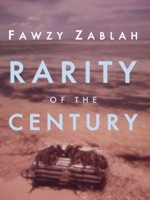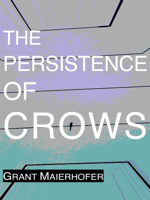 The subject matter of Richard Linklater’s film is self-evident from the title, as just about everyone has read or heard of Eric Schlosser’s exposé on the fast food industry. However, instead of following routine and producing a documentary from Fast Food Nation, Linklater has decided to create a fictional film based upon the non-fiction book.
The subject matter of Richard Linklater’s film is self-evident from the title, as just about everyone has read or heard of Eric Schlosser’s exposé on the fast food industry. However, instead of following routine and producing a documentary from Fast Food Nation, Linklater has decided to create a fictional film based upon the non-fiction book.
While this may recall the familiar introduction line to many historical epics, “This movie is based upon actual events,” the reverse of this statement is actually more accurate. Instead of a fictional film based upon a few facts, we have a plethora of facts structured around a loose narrative. We are shown an illustration of how the facts contained in the book play out. The result is a sometimes awkward, occasionally brilliant, amalgam of documentary and dramatic film.
The film can be separated into three storylines. The first follows a fast food executive (the fast food chain is named Mickey’s) as he investigates how feces got into his company’s hamburger patties, the second follows two immigrant women as they cross the border and take on jobs in the meatpacking plant that supplies Mickey’s, and the third follows a high school girl who works in one of the Mickey’s restaurants as she figures out her path in life. Linklater weaves the three storylines together in his usual meandering manner. We are constantly taken from one storyline to the next, without regard to any narrative pattern.
Linklater’s wandering, observant style works as an excellent complement to the source material. It allows for a documentary feel to the film – we are always in the midst of the character’s life, observing his or her daily routine or interactions with the surrounding environment, family members, or friends.
In regards to the surroundings, Linklater meticulously prepares the setting and framing of every single shot to reproduce the conditions that his fictional characters live in.
High school kids drift up and down the soulless suburban thoroughfares lined with ubiquitous neon corporate logos. Immigrants work in a schizophrenic slaughterhouse – when the executive visits, he sees a sterile, safe workplace but when he leaves, we see the gory remains of cows and squeamish accidents involving sharp metal objects waiting to happen. The corporate presence is always prevalent throughout the film, even when it is just a discarded candy bar wrapper sitting in the corner of a shot.
We hear Schlosser’s voice mostly in the interactions between the characters. His arguments of why Mickey’s (or corporations in general) is irresponsible and hurting the well-being of society at-large is didactically written into the dialogue. One of the major weak points of the film is that sometimes it seems like there wasn’t much of an effort put into creating competent dialogue from these arguments.
It’s possible that Linklater and co-screenwriter Schlosser wanted to create a Brechtian effect (Schlosser used to work in theater) to remind us that what we’re hearing is not fiction. There’s also the possibility that Schlosser is wary of legal action against him if the facts were altered in a way that could be considered libel. Or it could just be a combination of bad lines and bad delivery by the actors.
Whatever the case may be, the dialogue between the characters creates a discussion that often provides counterpoint to Schlosser’s arguments. Many of these discussions involve more than two people, which means that the issues discussed often cover a wide spectrum of views, creating a nuanced big picture view of the issues at hand.
Hardly a polemic, the film helps us understand and grasp the reach of the industry – it shows us how it works and how it plays a part in almost every aspect of our lives, for better or worse. It is in these moments that the facts of the book overtake the elements of film, moving it closer to the realm of documentary.
But Fast Food Nation is ultimately a film about the people involved. It is about how these people react and deal with the huge corporate behemoths that run the world. Once we’re primed with the arguments and varying viewpoints, Linklater presents us with an illustration of how it all plays out, which builds dramatic tension as we become more involved with each character’s development.
 The immigrant storyline is by far the most cinematic. The didactic elements are least present here probably because having non-English-speaking, barely-educated people spout Schlosser’s lines about unrestrained corporate power would be a bit too unconvincing.
The immigrant storyline is by far the most cinematic. The didactic elements are least present here probably because having non-English-speaking, barely-educated people spout Schlosser’s lines about unrestrained corporate power would be a bit too unconvincing.
Instead, we watch the immigrants’ struggles. We watch as they cross the border and take on deadening assembly-line work, while being harassed by their supervisors, but we also witness their elation upon receiving more pay in one day than they would have in a month in Mexico. They are filled with wonder at their newfound spending power and the convenience of a corporation-dominated world.
We also experience their desperation when everything falls apart because of a single event. Here, Linklater shows that even though the immigrants make more money in the States than in Mexico, the cost of living here is much higher, more than their new salaries can provide for. They are just barely staying afloat. Moreover, a better life in the States does not justify worker abuse.
The film is enthralling when it tells the story and argues visually. What can be a better argument against the industry’s environmental practices or treatment of animals than showing hundreds of thousands of cows crammed into tight pens spread across only a few acres, their chorus of plaintive moos drowning out all thought? Or matter-of-factly recording the blood splattered kill floor where the cows are methodically slaughtered?
Still, images need to fit within a larger context, and the combination of explanatory dialogue and the ensuing illustration provides the most impact.
In one scene, a rancher gives a speech to the fast food executive explaining that all the meatpackers care about is “pennies on the pound,” that nothing is personal to them. The world in general has become a Machine that only cares about getting that extra penny per pound.
Linklater then switches back to the immigrant storyline in the meatpacking plant, showing the incessantly moving line and the workers repetitively cutting the meat that passes by. The workers are overworked, tired, stressed, but they cannot rest. As one of them begins to faint, Linklater cuts to the meat at the end of the line, splattering into a packing box, then cuts back as the worker collapses. A parallel is instantly made between the worker and the meat – the Machine does not discern between human or animal.
The hope in the film is provided by the third storyline of the high school student. Here, Schlosser and Linklater set out possible avenues for individual action and change, but they don’t come without their difficulties. When the students attempt to free the cows at the meatpacking plant, the cows are afraid; they don’t leave their pens.
Afterwards, the students ask each other, “why didn’t they want to be free?” and one of them answers that perhaps they might be content where they are because they’re well fed. They just don’t know any better. Indeed, at this moment we cannot deny that Linklater and Schlosser are referring to human beings as well.








